ANALYZING EAST MULTNOMAH COUNTY’S COMPLEX ECONOMY
A special forum sponsored by MHCC on Tuesday, April 9, provided context to the significant economic divide between west and east Multnomah county, with a panel discussion providing strategies to better support East County in the future.
At the event sponsored by the City Club of Portland and the Portland Business Alliance (PBA), Andrew Hoan, PBA president and CEO, said the report presented reflects the region’s economic performance since 2010, especially a ‘deep dive’ look into East Multnomah County, which is considered anything east of Interstate 205.
The data can help guide policy decisions and the overall community, said Hoan.
“This report not only identified the challenges this area is experiencing, but the opportunities to create equitable prosperity across the region… it is critical that every part of our region thrives,” he said.
DATA PRESENTATION
Several crucial datapoints from the report were explained by John Tapogna, president of ECONorthwest, an economic consulting firm.
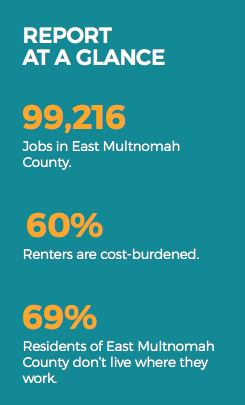
First, about 312,000 people live in East County, while the area has a total of 99,216 jobs. This is a positive economic indicator, Hoan said.
However, 20 percent of households in the area live below the federal poverty level (on average, 2013-17). That’s higher compared to the state of Oregon (15 percent) and Portland metropolitan area (12 percent).
Also, 61 percent of renters are cost-burdened – spending more than 30 percent of their income on housing. What’s more, said Tapogna, 35 percent of renter households are “severely” cost-burdened, meaning more than half of their income is spent on rent. This raises concern that these households are at risk to becoming homeless.
Tapogna discussed how wages in different industries compare to the average in the Portland metro area and how some workers are commuting in (67 percent) to East County, while other workers who live in the area are leaving for work (69 percent). This daily exchange puts a strain on the transportation system and increases environmental affects.
He then explained how median family income related to the average market rent over the years. In 2013, the cost of rent in Portland and East County took off, represented in a “vulnerability displacement map” based on the cost-burdened renter data.
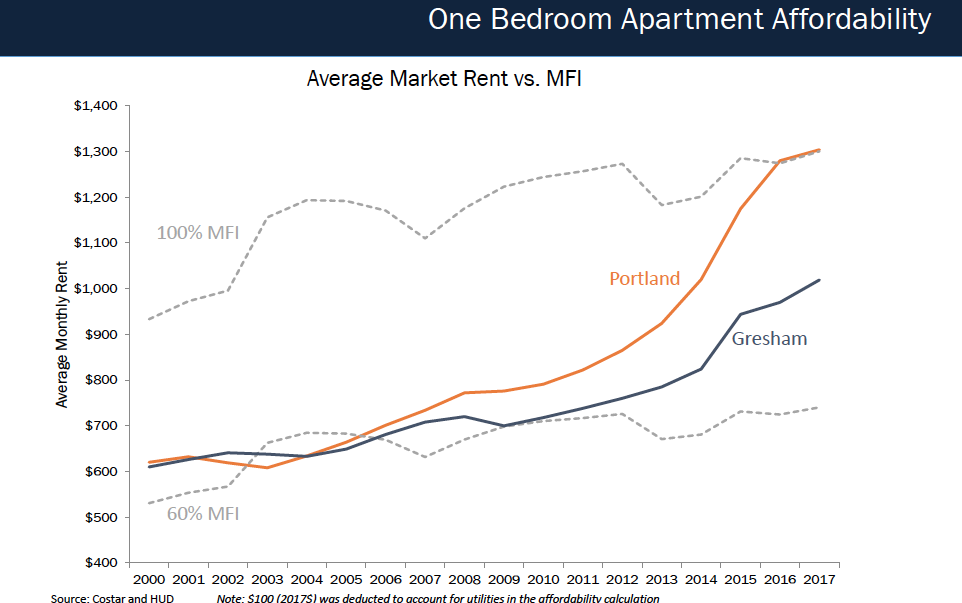
Courtesy: City Club of Portland, Portland Business Alliance, ECO Northwest
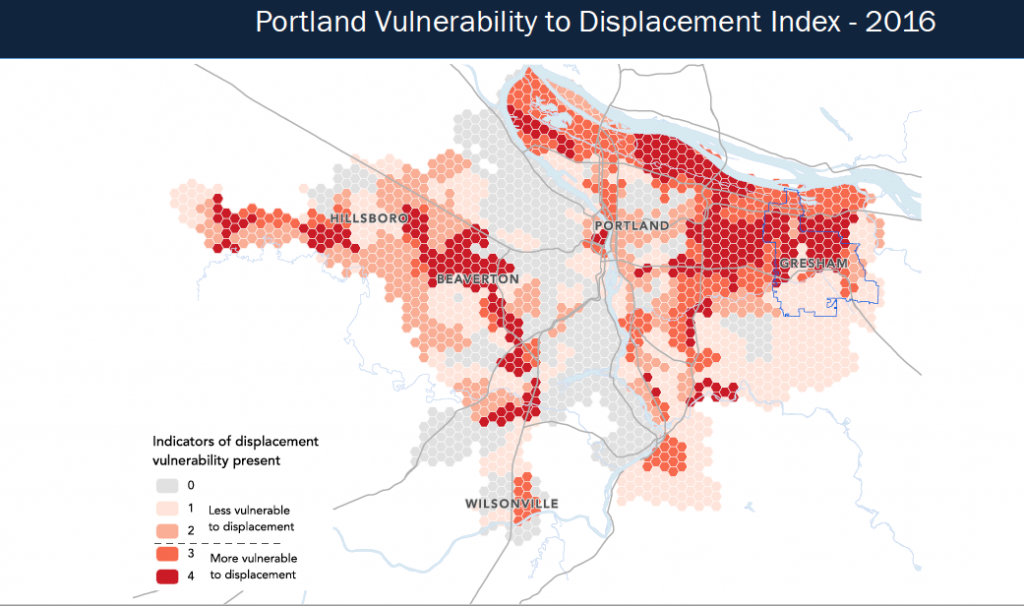
“We have not built enough housing since the Great Recession (2008-09),” Tapogna said. “If you look at the Portland metropolitan area on average between 2010 and 2016, we built about seven units of housing for every 10 new households born over that period of time.” Housing markets are complicated, but if a region or state is underproducing at that rate, upward pressure on rates, rents, and housing costs is sure to result, he said. Then he showed a map of where housing has been built recently, clearly a majority on the west side of Portland.
Tapogna outlined other data the East County community should watch closely, such as household income for children of low-income parents (found on theopportunityatlas.org), rates of students who qualified for free or reduced school lunches in 2008-09 versus 2018-19, and the increase of students of color in East County, compared to those in Portland Public Schools (as reported by the nonprofit All Hands Raised).
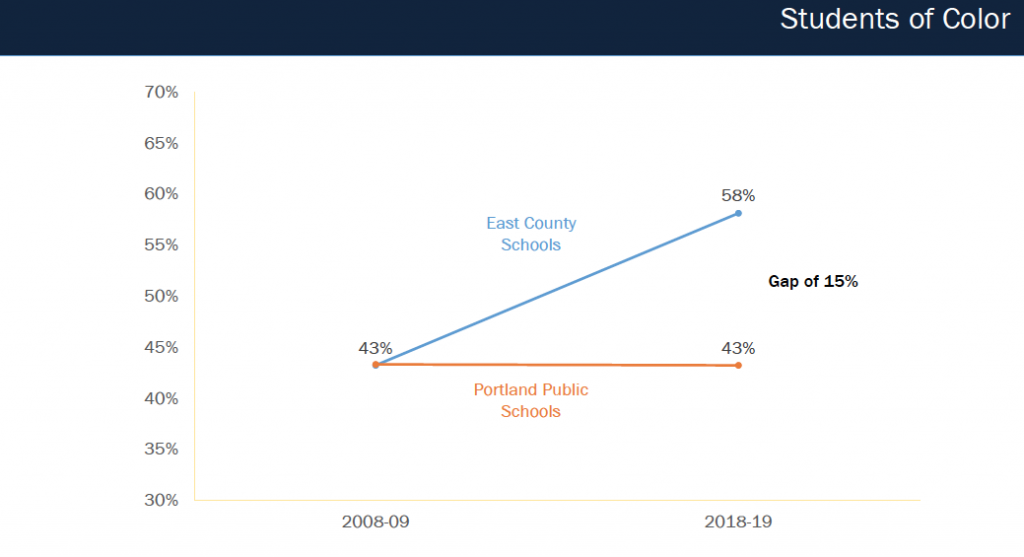
It all leads to how certain neighborhoods are “opportunity-rich” versus “opportunity-challenged,” he said. Understanding why this is occurring “is among one of the most important policy questions” people should be looking at and that the business community is working on, he said.
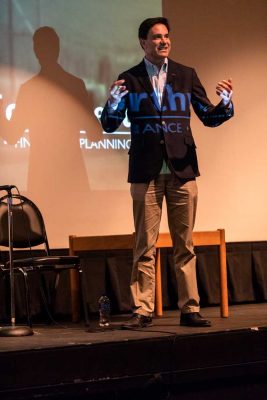
Tapogna summed up: “This is an area of dynamic change that is challenged right now with commuting challenges, with wage challenges… it really is an area that I would say as you look across the nation and you think about some of the responses that people are giving on public opinion surveys … where, here we are at the end of an economic expansion – we have (construction) cranes in the sky. There seems to be a low unemployment etc and yet people don’t feel like they’re getting ahead… in East County it’s easy to understand why they feel that way.”
Given the data discussed, the event turned to a panel of four individuals serving in public office or community service organizations: Lori Stegmann, Multnomah County commissioner (District 4), Eddy Morales, Gresham City councilor; Andy Miller, executive director of Human Solutions, and Josh Fuhrer from the Gresham Redevelopment Commission and Rockwood Rising.
The four answered questions on how the data connects with their work, ways businesses can partner with elected officials to address housing affordability and access to family wage jobs, what we (the public) should be focusing on to help the most vulnerable population stay sheltered, and what challenges and opportunities we should be thinking about with specific economic development.
The panelists shared at the end what next steps, take-aways, solutions or actions each has in mind, regarding the issues.
HOW DATA CONNECTS TO WORK
Stegmann said the information is nothing new for people living in East County, but that it’s important that they now have evidence-based data to advocate for the community. She added historical context for the area, saying that in the 1960s and ’70s the building code and design was not what it is today, which led to what many people call “accidentally affordable housing” – noting that a lot of people displaced during the recession and before came to the east side in search of lower rental costs.
She explained that low property tax rates in Gresham is good and bad, because it adds a burden. “Whenever you have a concentration of need in an already low property tax base, where you have more folks who are displaced and have literally no where else where they can afford to live,” there are troubles, she said. “We want them and welcome them but it does put a burden and strain on our resources.”
She referenced the fresh data in explaining why she thinks wages are lower as it relates to education levels. She also said people in East County don’t want to see multifamily affordable housing right now because of the low-quality (development) the area has seen so far. She noted that housing and jobs go together, stating, “if you don’t have one or the other it’s really difficult to attain either one of them.”
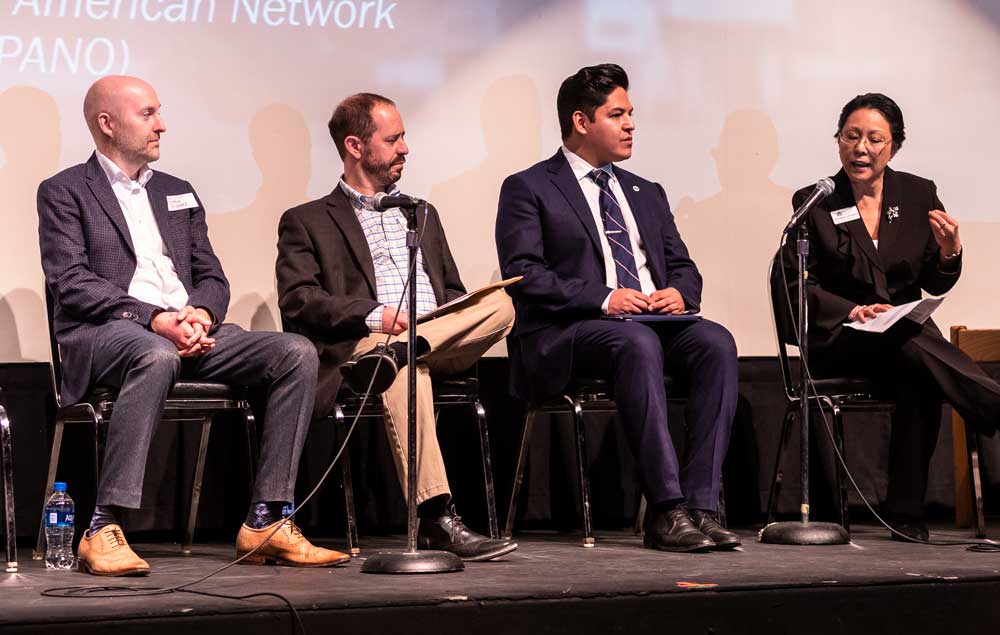
Lori Stegmann discusses the historical context of East Multnomah County and how the data can be used to advocate for the community. (Photo by Fletcher Wold / the Advocate)
BUSINESS AND PUBLIC OFFICIALS PARTNERSHIPS
Morales spoke next, saying it will take a lot of work and people to boost East County, adding that problems also present a variety of opportunities. He said government, citizens, residents, businesses – acting alone – are not going to get us out of this situation, listing a few places where vital partnerships are already happening.
For instance, East County Rising (which he helped found), a community development partner, and Hacienda CDC are planning to build over 200 affordable housing units in Gresham, with Hacienda CDC offering wrap-around services to help lift residents from poverty. It’s an example where nonprofits and businesses are bringing resources to build capital for new projects, whereas the government is not, he said.
FOCUS TO HELP THE VULNERABLE
Miller followed, connecting his work with Human Solutions, an organization servicing outer east Portland and East County by offering affordable housing, social services, utility assistance, and job training opportunities to homeless and low-income families.
He highlighted three initiatives that speak to the data shared by Tapogna.
The first is chronic homelessness, among persons with a long-term disability with an overlay of deep poverty that also creates chronic and sustained periods of homelessness. The response to this is permanent support housing that offers deep affordability and a housing-first approach, which includes services to support long-term housing stability.
“It’s absolutely critical as a community that we reach the goal that Multnomah County has bravely set with the city of Portland to develop 2,000 of these supportive housing units over the next 10 years,” said Miller. Voter-approved Portland and Metro housing bond measures will help, but the key is to add supportive services along with new housing, for which funds are lacking.
The second initiative centers on rent-burdened individuals, or what Human Solutions calls “the hidden homeless” – people at risk of becoming homeless. Miller mentioned school mobility rates in East County of 25 to 35 percent, where that many pupils switch schools in a single year. This harms the social development of children who lack a consistent group of friends or class setting. He said workforce housing could be the option to help cost-burdened families get affordable housing the market is not providing.
The final initiative his group is focusing on is neighborhoods, given that a crucial factor in a child’s economic mobility is the ZIP code they are born and raised in, he said: “I think the real question for east Multnomah County to ask itself is, who’s at the table, who’s doing the thinking about what the ZIP codes should look like? Is it developers? Is it government? Or are the families who are most at-risk for displacement and whose kids are most affected by underdevelopment in our neighbors at the table?”
SPECIFIC ECONOMIC DEVELOPMENT
Fuhrer was asked about his work with Rockwood Rising. As a Rockwood “optimist” who grew up in the area and sees talent and potential there, he and his group are bringing community members to that “table,” and teaming up with workforce training programs, small business support programs, housing, childcare, and construction manufacturing training programs.
He explained the backstory of Rockwood Rising: It began with old Fred Meyer site acquired by the city of Gresham in 2005, and later assessed by developers and other outsiders in 2013 to figure the best option. Their plan was to build a gated townhouse community, which led to Fuhrer to resign from the Gresham city council, upset that they were not talking with the community to assess what their true needs are.
This led to another position with the City of Gresham, focused on co-creating communities with those affected by the issues being discussed. That group found responses tied to the need of economic empowerment, or helping individuals in poverty find access to better jobs, affordable/healthy food, and how to create a small business.
He explained how that group then reached out to manufacturers to figure out what their needs were and connected the community with job-training options to benefit both the community and firms in need of skilled workers.
“I really think it comes down to partnerships and to community engagement … not asking them to come to city hall but meeting them where they are in the community and really authentically listening to the feedback and trying to incorporate it into a project to create those opportunities,” Fuhrer said.
CALL TO ACTION
The final question of the evening was directed to all the panelists, asking what their next steps or call-to-actions are.
” … when we go in and lead with traditional economic redevelopment, invest in trainings, invest in storefronts, what happens? We build great places but they don’t end up being enjoyed by, or experienced by, the communities of color that were living there because they become displaced,”
Andy Miller, executive director of Human Solutions
Fuhrer pushed for Rockwood and Gresham in particular to have voters extend repayment of the $92 million debt on urban renewal bonds that voters approved in 2003 for the city to spend (the spending has only hit $59 million, due to the recession). It would not raise anyone’s taxes a single dollar, and would allow for three-to-four Rockwood Risings to be built to improve the community’s economic outlook.
Smarter development is vital, Miller explained.
“We know from the experience in Portland, that when we have an area that is experiencing concentrations of poverty, concentrations of communities of color, and when we go in and lead with traditional economic redevelopment, invest in trainings, invest in storefronts, what happens? We build great places but they don’t end up being enjoyed by, or experienced by, the communities of color that were living there because they become displaced,” he said. “We have to have a vision of doing something different and doing our work differently out here in East Multnomah County, than we’ve done in Portland and not just focus on economics and jobs but focus on holistically built neighborhoods that are really framed by the needs and voices of the people who have the least ability to maintain economic and housing security living in the community right now.”
Morales spoke of the need for partnerships, having a shared spirit for the area, and not driving for profits but being committed to the community and doing good by workers, noting again that businesses and nonprofits are doing key work where government is unable to contribute.
Stegmann ended the panel discussion with two notes, the first being that poverty levels potentially coincide with less access to internet, which the county is working on, in an effort to implement more affordable, municipal broadband service.
She also said that she is leading the effort for the county in the 2020 U.S. Census, hitting on state-funding formulas. For example if Multnomah County were divided into two states, with 82nd Avenue as the division line, “West Multnomah County would be the second wealthiest state in the United States; East Multnomah County would be the second poorest,” she said.
She noted the county is working with the state legislature to make sure there is a complete count for the Census, and finally, stated that the data presented by ECONorthwest can now be used for policy making to get more resources out to East County.

Free, high quality, universal preschool is a great economic strategy that invests in the current residents and their children. We could create universal preschool in Multnomah County with a county income tax on the highest income 5% of households.